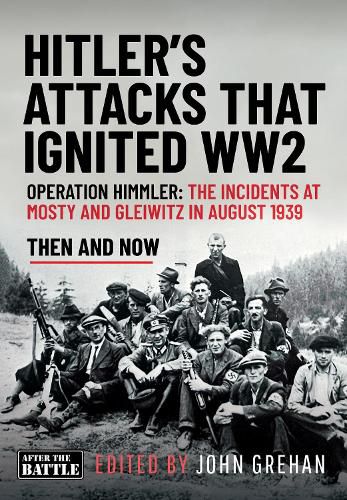Readings Newsletter
Become a Readings Member to make your shopping experience even easier.
Sign in or sign up for free!
You’re not far away from qualifying for FREE standard shipping within Australia
You’ve qualified for FREE standard shipping within Australia
The cart is loading…






On 26 August 1939, Hitler planned his Blitzkrieg against Poland, advancing through the Jablonkow Pass to capture Warsaw. A key part of the strategy involved seizing the tunnel and station at Mosty on the Ko?ice-Bohumin railway to prevent Polish resistance. Late on 25 August, a German Abwehr unit, disguised in civilian clothing, crossed the border and reached Mosty by 04:00 on 26 August. Their mission was to secure the tunnel for the 7th Infantry Division nearby. However, Hitler postponed the invasion after Britain signed a defence pact with Poland. Anticipating the tunnel's strategic importance, the Poles rigged it with explosives and maintained strong communications. A skirmish ensued, forcing the Germans to retreat, alerting Poland to the impending invasion. Determined, Hitler rescheduled the attack for 1 September. To justify the invasion, German operatives staged a "false flag" attack on the Gleiwitz radio station on 31 August, broadcasting an anti-German message in Polish and leaving dead bodies-prisoners from Dachau-in Polish uniforms as evidence. This was part of Operation Himmler, a series of staged provocations. At dawn on 1 September, German tanks entered Poland. By 3 September, Britain and France declared war on Germany, marking the start of the Second World War. Hitler's Attacks That Ignited WW2 explores these events through eyewitness accounts, documents, and photographs. AUTHOR: John Grehan has written, edited or contributed to more than 300 books and magazine articles covering a wide span of military history from the Iron Age to the recent conflict in Afghanistan. John has also appeared on local and national radio and television to advise on military history topics. He was employed as the Assistant Editor of Britain at War Magazine from its inception until 2014. John now devotes his time to writing and editing books. 150 b/w illustrations
$9.00 standard shipping within Australia
FREE standard shipping within Australia for orders over $100.00
Express & International shipping calculated at checkout
Stock availability can be subject to change without notice. We recommend calling the shop or contacting our online team to check availability of low stock items. Please see our Shopping Online page for more details.
On 26 August 1939, Hitler planned his Blitzkrieg against Poland, advancing through the Jablonkow Pass to capture Warsaw. A key part of the strategy involved seizing the tunnel and station at Mosty on the Ko?ice-Bohumin railway to prevent Polish resistance. Late on 25 August, a German Abwehr unit, disguised in civilian clothing, crossed the border and reached Mosty by 04:00 on 26 August. Their mission was to secure the tunnel for the 7th Infantry Division nearby. However, Hitler postponed the invasion after Britain signed a defence pact with Poland. Anticipating the tunnel's strategic importance, the Poles rigged it with explosives and maintained strong communications. A skirmish ensued, forcing the Germans to retreat, alerting Poland to the impending invasion. Determined, Hitler rescheduled the attack for 1 September. To justify the invasion, German operatives staged a "false flag" attack on the Gleiwitz radio station on 31 August, broadcasting an anti-German message in Polish and leaving dead bodies-prisoners from Dachau-in Polish uniforms as evidence. This was part of Operation Himmler, a series of staged provocations. At dawn on 1 September, German tanks entered Poland. By 3 September, Britain and France declared war on Germany, marking the start of the Second World War. Hitler's Attacks That Ignited WW2 explores these events through eyewitness accounts, documents, and photographs. AUTHOR: John Grehan has written, edited or contributed to more than 300 books and magazine articles covering a wide span of military history from the Iron Age to the recent conflict in Afghanistan. John has also appeared on local and national radio and television to advise on military history topics. He was employed as the Assistant Editor of Britain at War Magazine from its inception until 2014. John now devotes his time to writing and editing books. 150 b/w illustrations